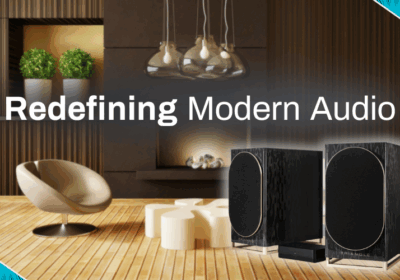If you have been considering or researching Home Theatres over the last few years, you would be familiar with the term ‘immersive audio’.
In recent times home theatre systems have become much more proficient at localising sounds, particularly those originating in the surround channels. You could hear rolling thunder emanating from multiple speakers behind you or listen to a solitary bird whistling from a single overhead speaker in a multi-channel installation.
In any well-designed system, the listener should become immersed or lost in the sound – the speakers should become sonically invisible- something that has been enhanced with the introduction of overhead channels by technologies such as Dolby Atmos for example.
In a Home Theatre installation, this makes perfect sense. When watching a movie (or playing a video game), we look for the most realistic recreation possible. A bird will tweet from above your head. A plane will fly overhead; forest noises will surround you etc. However, many companies are now touting this technology for the traditional two-channel market.
Firstly, it is crucial to recognise that while a two-channel system consists of two speakers, the result can, or should be, far more involving. With a properly set-up system, you should not be able to close your eyes and locate the speakers. Each artist or instrument should occupy their/its own space between, behind or in front of the speakers. The music from instruments should hang in the air as if the playing artist was in front of you, not project from the direction of speaker placement.
This is the magic and immersive part of an excellent two-channel system.
I am yet to be convinced utilizing the sound mixing capabilities behind the immersive experience of a Home Theatre system and applying it to a more traditional audio-based system to achieve a more ‘lifelike’ performance, works.
We have been down this road before. I have been in this industry long enough to recall the four (4) channel Quadrophonic systems of the early ‘70’s, and there have been numerous surround versions of music reproduction come and go since then.
To me, the concept, as it is usually presented, is not realistic. Yes, the sound of a bird in a tree should come from a speaker above your head because that is where the bird is. But if you are listening to a band in a concert hall, the musicians are generally situated in front of you, and I am not convinced that having the band all around you would be desirable, even if it was practical.
At the same time, the concept is being taken seriously by many in our industry. The Music Academy recently renamed their ‘Best Surround Sound Album’ to ‘Best Immersive Audio Album’. There has been music by some pretty impressive industry heavyweights involved in this category over the last few years, including Ray Charles (Genius loves company), Dire Straights (Brothers in Arms – 20th-anniversary edition), Donald Fagen (Morph the Cat), George Martins production of the Beatles music on the album Love, the Foo Fighters, Alan Parsons, Diana Krall, Beyonce, Roger Waters – the list goes on.
Classical music features highly in this category, and when done correctly, there is some justification – particularly with choral music. Once the temptation to place instruments in various corners in the hall is put to one side, I accept that there are instances where ‘immersive surround’ can work. This has been championed by 2L record label principal Morton Lindberg, who also holds the record of the most Grammy nominations (twenty-eight!) – before winning one.
In Mixdown’s Guide to Immersive Audio, they write, “…..stop and consider where it is that you’d place the hi-hat? With Immersive, the hi-hat can be all around us.” This is where I believe we get it wrong. I recall one album where the lead guitar was prematurely positioned in the rear left channel speaker – very disconcerting.
Will the current push for immersive audio for music succeed the way it has for video and gaming – or will it fail as many previous attempts have? I suspect this will depend on how we approach it – if we handle it in a subtle manner, it may do so. On the other hand, if we fall into the trap of turning it into a technology showpiece (hi-hats all around us!), I think the average listener will continue to embrace the traditional way of listening.




